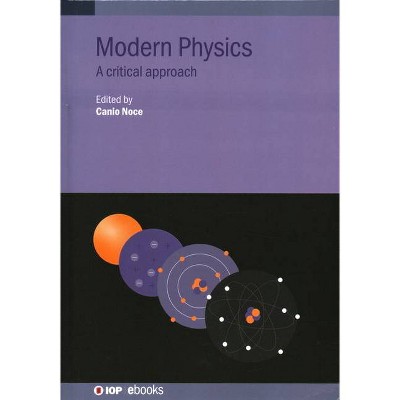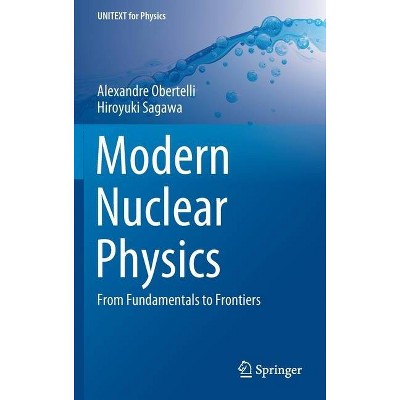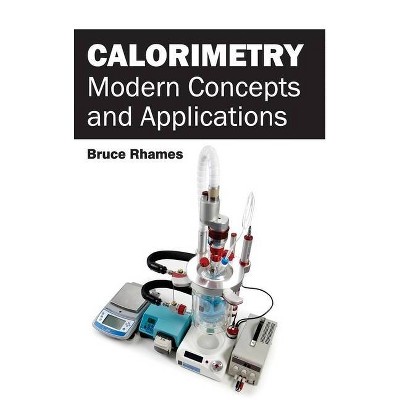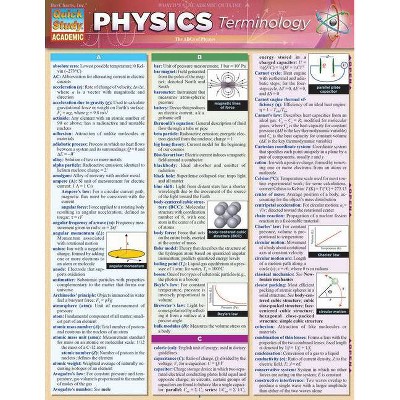Applications of Modern Physics in Medicine - by Mark Strikman & Kevork Spartalian & Milton W Cole (Hardcover)
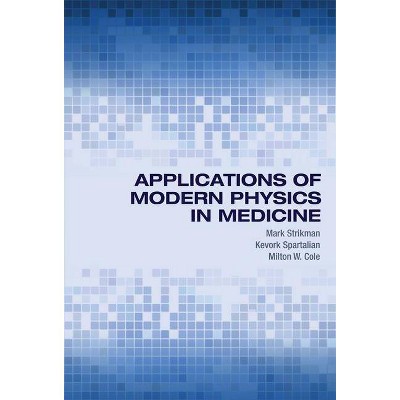
Similar Products
Products of same category from the store
AllProduct info
<p/><br></br><p><b> About the Book </b></p></br></br>"Many remarkable medical technologies, diagnostic tools, and treatment methods have emerged as a result of modern physics discoveries in the last century--including X-rays, radiation treatment, laser surgery, high-resolution ultrasound scans, computerized tomography (CT) scans, and magnetic resonance imaging. This undergraduate-level textbook describes the fundamental physical principles underlying these technological advances, emphasizing their applications to the practice of modern medicine.Intended for science and engineering students with one year of introductory physics background, this textbook presents the medical applications of fundamental principles of physics to students who are considering careers in medical physics, biophysics, medicine, or nuclear engineering. It also serves as an excellent reference for advanced students, as well as medical and health researchers, practitioners, and technicians who are interested in developing the background required to understand the changing landscape of medical science. Practice exercises are included and solutions are available separately in an instructor's manual. Complete discussion of the fundamental physical principles underlying modern medicine Accessible exploration of the physics encountered in a typical visit to a doctor Practice exercises are included and solutions are provided in a separate instructor's manual (available to professors) A companion website (modernphysicsinmedicine.com) presents supplementary materials "--<p/><br></br><p><b> Book Synopsis </b></p></br></br><p><b>The connections between modern physics and medical technology</b> <p/>Many remarkable medical technologies, diagnostic tools, and treatment methods have emerged as a result of modern physics discoveries in the last century--including X-rays, radiation treatment, laser surgery, high-resolution ultrasound scans, computerized tomography (CT) scans, and magnetic resonance imaging. This undergraduate-level textbook describes the fundamental physical principles underlying these technological advances, emphasizing their applications to the practice of modern medicine. <p/>Intended for science and engineering students with one year of introductory physics background, this textbook presents the medical applications of fundamental principles of physics to students who are considering careers in medical physics, biophysics, medicine, or nuclear engineering. It also serves as an excellent reference for advanced students, as well as medical and health researchers, practitioners, and technicians who are interested in developing the background required to understand the changing landscape of medical science. Practice exercises are included and solutions are available separately in an instructor's manual.</p><ul><li>Complete discussion of the fundamental physical principles underlying modern medicine</li><li>Accessible exploration of the physics encountered in a typical visit to a doctor</li><li>Practice exercises are included and solutions are provided in a separate instructor's manual (available to professors)</li><li>A companion website (modernphysicsinmedicine.com) presents supplementary materials</li></ul><p/><br></br><p><b> From the Back Cover </b></p></br></br><p>"<i>Applications of Modern Physics in Medicine</i> fills an important need: it explains the physics principals behind commonly used medical diagnostic and therapeutic procedures to scientists, engineers, and technicians working in the field. The necessary basic physics is discussed clearly and simply in early chapters and then used effectively and convincingly in later chapters covering medical applications. This lovely book should lead to the creation of new physics courses all over the world."<b>--Gerald Miller, University of Washington</b></p><p>"With a refreshing and accessible style, this textbook grounds medical physics in familiar physical principles, making it useful for undergraduate physics teaching. This book will have a place in a wide range of biomedical science courses and medical physics undergraduate modules, and as supplementary reading for medical doctors, radiographers, and other health professionals." <b>--Mike Partridge, Gray Institute for Radiation Oncology and Biology, University of Oxford</b></p><p>"Bridging the gap between the fundamental concepts of modern physics and medical technology in modern medicine, this book encompasses large numbers of topics from X-rays and gamma rays to lasers, MRI, ultrasound, and therapeutic applications of modern physics technologies. It will serve as a good introductory text to students in biomedical engineering, medical physics, health physics, and biophysics."<b>--Terry T. Yoshizumi, Duke University School of Medicine</b></p><p/><br></br><p><b> Review Quotes </b></p></br></br><br>"<i>Applications of Modern Physics in Medicine</i> fills an important need: it explains the physics principals behind commonly used medical diagnostic and therapeutic procedures to scientists, engineers, and technicians working in the field. The necessary basic physics is discussed clearly and simply in early chapters and then used effectively and convincingly in later chapters covering medical applications. This lovely book should lead to the creation of new physics courses all over the world."<b>--Gerald Miller, University of Washington</b><br><br>"Bridging the gap between the fundamental concepts of modern physics and medical technology in modern medicine, this book encompasses large numbers of topics from X-rays and gamma rays to lasers, MRI, ultrasound, and therapeutic applications of modern physics technologies. It will serve as a good introductory text to students in biomedical engineering, medical physics, health physics, and biophysics."<b>--Terry T. Yoshizumi, Duke University School of Medicine</b><br><br>"With a refreshing and accessible style, this textbook grounds medical physics in familiar physical principles, making it useful for undergraduate physics teaching. This book will have a place in a wide range of biomedical science courses and medical physics undergraduate modules, and as supplementary reading for medical doctors, radiographers, and other health professionals." <b>--Mike Partridge, Gray Institute for Radiation Oncology and Biology, University of Oxford</b><br><p/><br></br><p><b> About the Author </b></p></br></br><b>Mark Strikman</b> is Distinguished Professor of Physics at Pennsylvania State University. <b>Kevork Spartalian </b>is Associate Professor of Physics at the University of Vermont. <b>Milton W. Cole</b> is Distinguished Professor of Physics at Pennsylvania State University.
Price History
Price Archive shows prices from various stores, lets you see history and find the cheapest. There is no actual sale on the website. For all support, inquiry and suggestion messagescommunication@pricearchive.us
